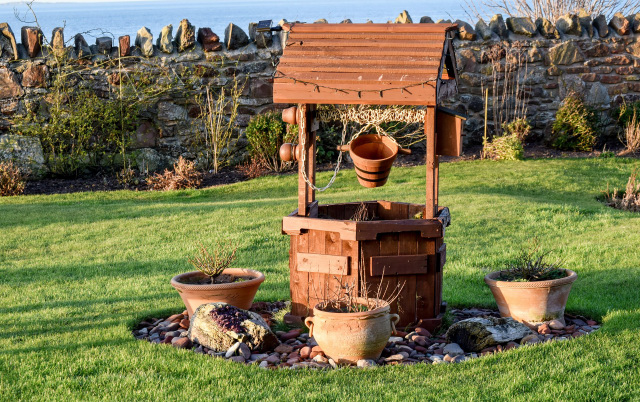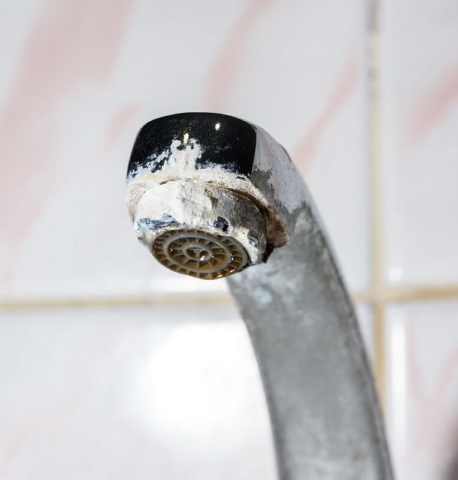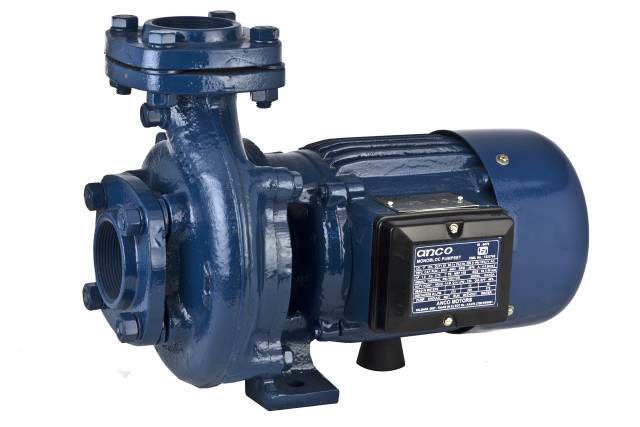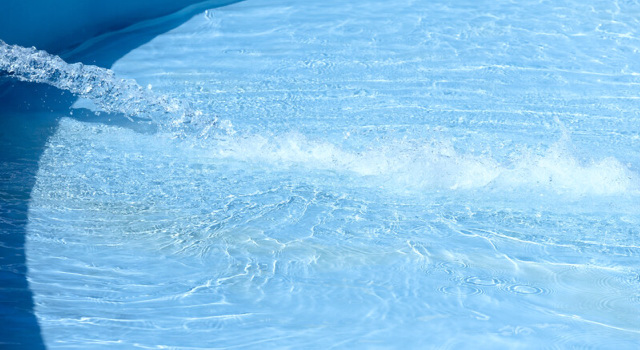As a pool owner, you might wonder if you can fill your pool with well water. You can but there is more to know about it and this article digs right into the topic.
So, let’s dive in.
Article Contents
Is Well Water Safe To Use In A Pool?
It is safe to use well water in a pool if you treat the water to remove all impurities that can damage the pool and cause murky water.

The Problem With Well Water for Pools
Using well water to fill a pool should be considered carefully. Many people have filled their pools from their well with great results.
On the flipside, if the water isn’t suitable or you’re not up to the challenge of treating the water, then it may be a better investment to truck the water in.
Filling a pool with bad water can lead to years of issues with your pool – if you’re unlucky, you may spend hundreds of dollars on chemicals and hours and hours of time trying to rectify the water. Bad water may also cause permanent damage to the pool such as staining and damaged pipes.
The water from a well can host tons of trace metals, minerals, bacteria and dirt that get into the water from the ground. This makes well water contaminated and is why you will need to carefully treat the water.
Water filled with dirt can cause staining on the walls of the pool and cloudy water. Not to mention the high possibility of bacteria and algae that will take shelter in your pool. Eventually, you may find yourself swimming in algae-infested pool water – gross!
Water from wells is often high in minerals like calcium and metals like copper and magnesium. Calcium and magnesium rich water has a high hardness. Hard water can cause scale which clogs plumbing lines and makes the water chemistry go wonky.

Are Metals in Pool Water Dangerous for Swimming?
Having metals in the water is in fact safe for swimmers. The issue with water with metals in it is it can look swampy and is not clear. It’s not ideal for a pool and could be a safety issue if you’re unable to see small children swimming in the water.
Important Considerations Before Using Well Water in a Pool
Before you decide to use well water to fill your pool up, you’ll need to consider multiple things.
- The metals & minerals
- The well’s flow rate
- Testing the water
- Water usage
Let’s take a closer look at these considerations.
Metals & Minerals
Since the water is coming from below the ground and hasn’t been treated like city water, it will likely have several metals and minerals in it. An excess of these can stain the pool and cause the water to turn brown and look murky
Stains on the walls of pools are another problem caused by metals in the water.
We have a full article on removing iron from pool water here: How to Remove Iron from Pool Water (Water High with Iron)
Well’s Flow Rate
Pools take a lot of water so the flow of water from your well has to be very good. The water flow refers to how many gallons of water the well can produce at intervals and how fast the water flows back into the well from the ground.
Your well will need to be able to handle the amount of water required. You may need to fill your pool over several days or weeks for your well to keep up.
Testing The Water
Before deciding to use well water, you’ll need to know exactly what sort of water you have. A water test kit will test the metals in your water.
- Tests for lead, pesticides, bacteria, nitrates/nitrites, chlorine, and more
- Meets EPA standards for lead detection & has the most sensitive lead test available
- Perfect for testing well water & other pool fill water for metals & minerals
You’ll also need to test the water for pH, alkalinity and calcium. Use a good quality pool water test kit.
- Tests for Chlorine, Bromine, pH, Total acidity, Calcium Hardness and Cyanuric Acid
- Extremely accurate
- For pools or spas
This will give you a better idea of what you’re dealing with and if the well water is suitable for your pool.
Water Usage
If the well is a shared water source, then consider your neighbors before filling up your pool. You won’t win friends by running the well dry.
Pros of Using Well Water for Pool
Let’s take a look at some of the pros of using well water in a pool.
- It’s cheap. Using well water is a pocket-friendly option.
- Well water is not metered. If the water flow is good enough, you can use as much water as you want because you are not charged any fee for it.
But there are two sides to every coin. Let’s check out the cons of using well water in a pool.
Cons of Well Water for Pool
- Well water can have a high amount of trace metal and dissolved irons. This can cause staining and discoloration on the walls of the pool.
- Can also have high amounts of minerals.
- There is the risk of running the well dry, especially when filling a large pool.
- Treating the water can be high in cost for large pools.
- It’s time-consuming. Filling the pool with well water can take a few days.
How To Fill A Pool Using Well Water (Best & Safest Way)
Filling a pool using well water is done as follows:
1. Check the well’s water flow rate.
2. Test the water using a pool water test kit and metal test kit.
3. Attach the garden hose to the well’s pump and place the open end of the garden hose inside the pool.
4. Turn off the pool equipment and turn on the well’s pump.
5. Treat the water using the needed chemicals.
Keep reading for detailed instructions on filling your pool using well water.
What Tools Do You Need To Fill A Pool With Well Water?
- A garden hose
- A bucket
Note: Don’t scrimp on your pool water test kit. Get a good one. It will last years and save you a lot of hassle by giving you accurate readings. Many pool owners have wasted countless hours because of bad readings from low quality test kits.
Let’s get to work.
Filling A Pool With Well Water (Detailed Instructions)
It’s important that you don’t skip these steps.
1. Check The Flow Rate
Pools range in volume from a few thousand gallons to 40,000 gallons of water for a large size pool. Your well will need to supply at least 10 gallons per minute (GPM). If the well produces way less than this, then you’ll struggle to fill your pool.
You can calculate how long it will take to fill your pool by dividing the volume of the pool by the flow rate of your well.
e.g. If your pool is 20,000 gal in volume and your well can supply 10 gal per minute, simply divide 20,000 by 10, which gives you 2000. If you fill your pool continuously, it will take 2000 mins. to fill or 33 hrs (2000 divided by 60 mins.).
2. Test The Well Water
These steps are crucial and should be done BEFORE you fill your pool. Fill up a clean bucket from your well. (must be super clean and not contaminated otherwise you’ll get false readings).
Now test the waters using the metals and drinking water test kit.
Test the water with the pool water test kit.
This will tell you what you’re dealing with.
If you have high levels of metals in the water you’ll need to make a choice. You’ll either need to treat the water or buy water in. Buying water in will mean less chance of issues but it will cost some money. Treating the water will cost more in chemicals and if you don’t know what you’re doing, lots of time and frustration.
Your choice.
3. Attach The Garden Hose
Attach one end of the garden hose to the tap nearest to the well’s pump. Then attach a hose filter to the other end. The hose filter will pre-treat the water and filter out contaminants and some metals in the water.
The other end of the hose with the hose filter should be placed in the pool.
4. Turn On The Well’s Pump
Turn off the pool equipment and turn on the well’s pump to start pumping water from the well into the pool. You can’t fill the pool in one go even if the well’s flow rate is good enough. Filling the pool in one go will put too much pressure on the well’s pump and can run the well dry.

You can take a break every hour while filling the pool. A large pool can take up to 2 days to get filled while a smaller one can take up to a day.
5. Treat The Water
When the pool is filled, turn off the well’s pump and disconnect the garden hose. Don’t worry if the pool looks brown. You can usually fix this up.
The next step is to test the water again with:
You’ll need to hit the water with the following (but go easy, it’s better to add small amounts multiple times):
- Algaecide (Polyquat) this will control the algae and get the pool sanitary
- Chlorine to sanitize the water and keep it safe
- Muriatic Acid to stabilize the chlorine
Adjust the water pH. Here’s how:
If you have metals in the water, you can try adding a metal sequestering chemical which will hold the metals in place and prevent staining. It will not remove them though. Removing them is beyond the scope of this article.
Turn on the pump and filter, filter, filter.
Leave your pump running and retest your pH, Chlorine, Cyanuric Acid (stabilizer) and calcium hardness. Make adjustments and repeat until you get the balance right.
You did it, now you have successfully filled your pool from your well!
Will I Run My Well Dry Filling A Pool?
You will not run your well dry filling a pool unless the well has a low flow rate. If the flow rate of the well is lower than 150 gallons per hour, then you can run the well dry while filling a pool.
Before you fill a pool with water from your well, you should check the well’s flow rate. Any flow rate lower than 150 gallons per hour can’t fill a pool and you will run the well dry if you try it. It is also important to allow the well to replenish the water it has pumped out while filling the pool.

Will I Hurt The Well’s Pump Filling A Pool?
Filling a pool with well water will not hurt the well’s pump as long as you don’t fill the pool in one go. Attempting to fill a pool in one go will put too much pressure on the well’s pump and cause it to burn out.
Pools require thousands of gallons of water to get filled. The well’s pump can supply this amount of water but only at intervals.
So you should turn off the pump for an hour to allow it to rest before going again. This will prevent a burnout of the well’s pump. This also gives the well enough time to replenish the water.
But if you think your well’s pump can’t handle this task, there are alternative water sources to fill your pool with. Let’s check out some of them.
Alternative Water Sources To Fill Pool Up With
If the thought of well water in the pool doesn’t work for you, here are a few alternatives to well water.
Tap Water
Tap water comes from the municipalities. An advantage of tap water is that it is treated and doesn’t have many contaminants. A disadvantage is you will be charged more money for water supply.
Pool Water Delivery
You can get gallons of pool water delivered to your home. An advantage of pool water delivery is that the water is best suited for a pool. A disadvantage is the high cost of this service.
Fire Department
You can contact the fire department in your area to check if they can fill your pool. An advantage of this is your pool gets filled very quickly through high-capacity hoses. A disadvantage is that the water isn’t treated so you will still need to test and treat the water.
FINAL THOUGHTS
Overall, you can fill your pool with well water but your well should be able to handle the water supply load. If not, you can run the well dry. You should also treat the water after filling the pool so you can get clean and not murky pool water.



